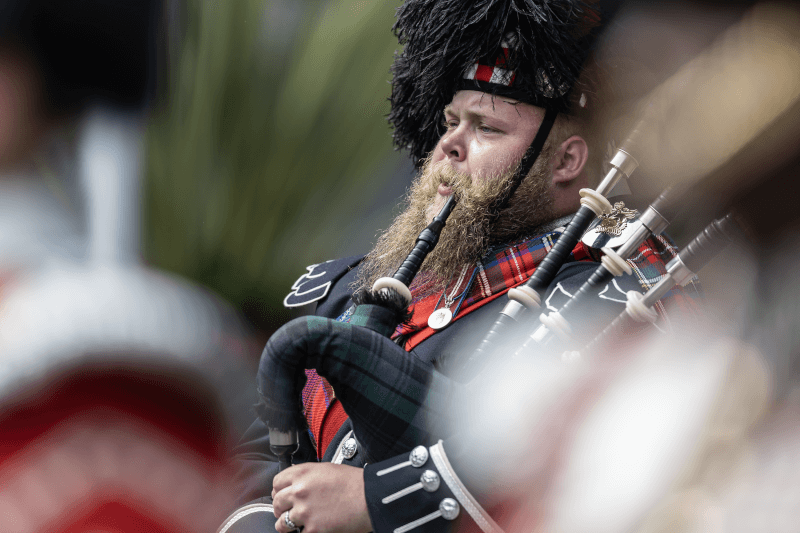
A piper in the Ceremonial Guard Pipes and Drums is on parade at Rideau Hall, home of the Governor General.
[Stephen J. Thorne/LM]
A jaunty march. Many feet and arms moving as one. Chins up. Shoulders back. The repetitive clack of heels on pavement. The stirring skirl of dozens of bagpipes rising. You feel it in the chest, the primordial stimulation of mechanoreceptors absorbing the rat-a-tat-tat and thump-thump of beating drums.
There is the odd satisfaction wrought by all that uniformity: dress (the more ostentatious the better), hats, footwear, accoutrements. All accentuated by discipline in execution and movement.
On June 23, as she does every year, the Governor General inspected the Ceremonial Guard, a summertime tradition—accompanied by a good, albeit brief, parade.
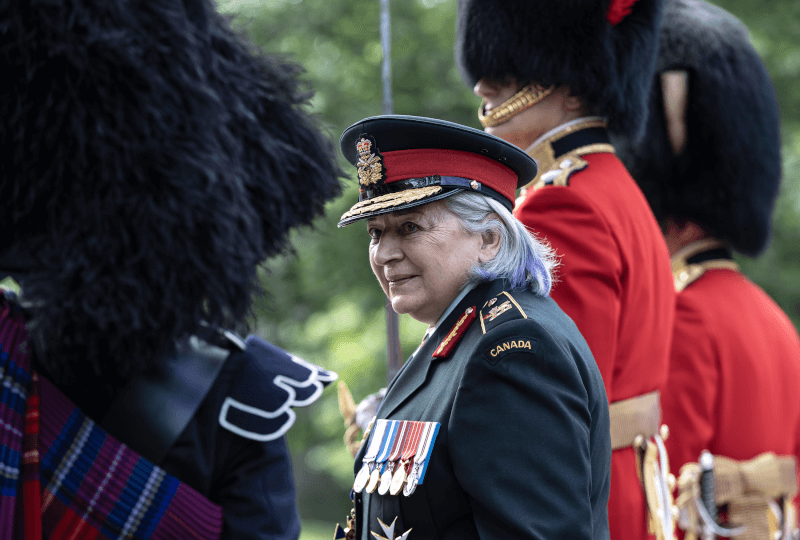
Governor General Mary Simon pauses for an exchange with a member of the Ceremonial Guard Pipes and Drums during an inspection launching the unit’s summer season of parades, sentry duties and ceremonies.
[Stephen J. Thorne/LM]
In 2016, the Ceremonial Guard was reformed as a sub-unit of the GG’s Foot Guards. Its ranks include members of the Foot Guards and the Grenadier Guards. It performs sentry duties at the gates of Rideau Hall, shares duties at the Tomb of the Unknown Soldier on the National War Memorial, mounts guards of honour for visiting dignitaries, and conducted the Changing of the Guard Ceremony on Parliament Hill each summer. This year, the Changing of the Guard Ceremony became a music-only ceremony called Canada on the March.

Major Brian Wright, commanding officer of the Ceremonial Guard (left) and aide-de-campe, Major Jean-Francois Moreau (behind), escort Gov. Gen. Mary Simon on her inspection in front of Rideau Hall. [Stephen J. Thorne/LM]

The practice and the dress of the Ceremonial Guard are rooted in British tradition. Their black bearskin caps hearken to the British First Regiment of Foot Guards’ victory over Napoleon’s Grenadier Regiments of the Old Guard at the 1815 Battle of Waterloo. The First Foot Guards were subsequently renamed the “Grenadier Guards” and, by 1831, all British foot guards’ regiments were issued bearskin headdress. They were originally worn by 17th century European grenadiers, partly to make their soldiers appear taller and more intimidating. The feather plumage denotes the regiment. [Stephen J. Thorne/LM]

The guards’ hats stand almost 46 centimetres (18 inches) tall and weigh less than a kilogram. They are traditionally made from Canadian black bear fur—one bear per hat—and, at about $1,000 a hat, they are built to last for up to 80 years. The British Army has tried various synthetic substitutes for the skins, but the man-made fur caps lost their shape in strong winds and got waterlogged in heavy rains. Several Canadian Forces regiments wear bearskin hats for ceremonial purposes. [Stephen J. Thorne/LM]
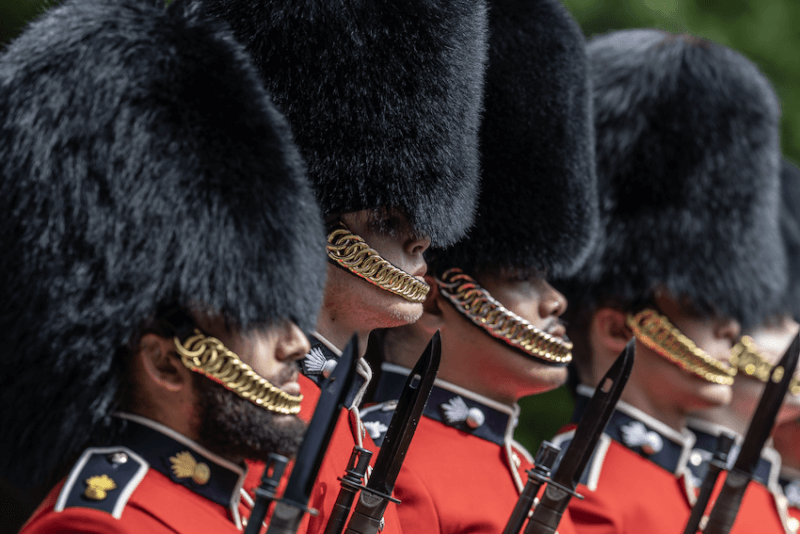
The chin straps are not actually straps, but chains, and they are rarely worn under the chin but, more typically, beneath the lip. There are numerous explanations for this. Some say the chain is designed to easily hang when not in place; others claim it is a guard to protect the wearer from glancing blows from cavalry sabres. Another theory has it that, if shot and falling backwards, a soldier could prevent a broken neck by wearing the chain under the lip rather than the chin, thus negating the weight of the hat on impact. Still others claim it is simply a matter of style and tradition, or a detail helping distinguish one regiment from another. Then there’s this, from an online chatroom devoted to the subject: “They’re actually gags. They must have once had a problem with chatty soldiers on parade, and this was the solution. Either that or it’s to stop them from snacking while marching.” [Stephen J. Thorne/LM]
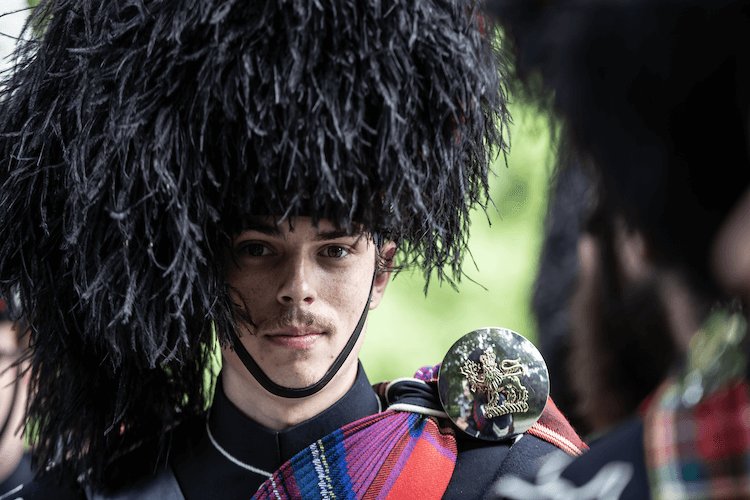
The Ceremonial Guard Pipes and Drums are another animal altogether. The pipers’ uniforms are based on the old Canadian Guards pattern. They wear the Royal Stuart Tartan, black doublets and ostrich feather bonnets with red-and-white plumes. [Stephen J. Thorne/LM]
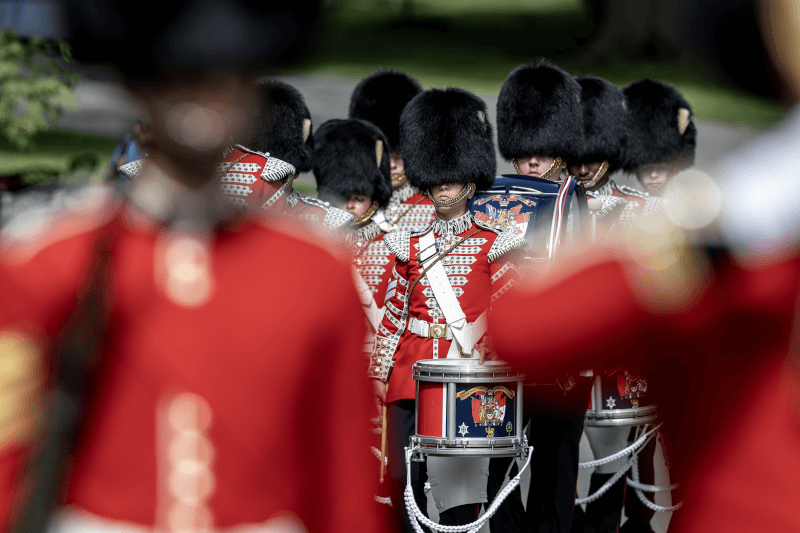
The drummers’ uniforms are patterned after the Canadian Grenadier Guards Corps of Drums. [Stephen J. Thorne/LM]
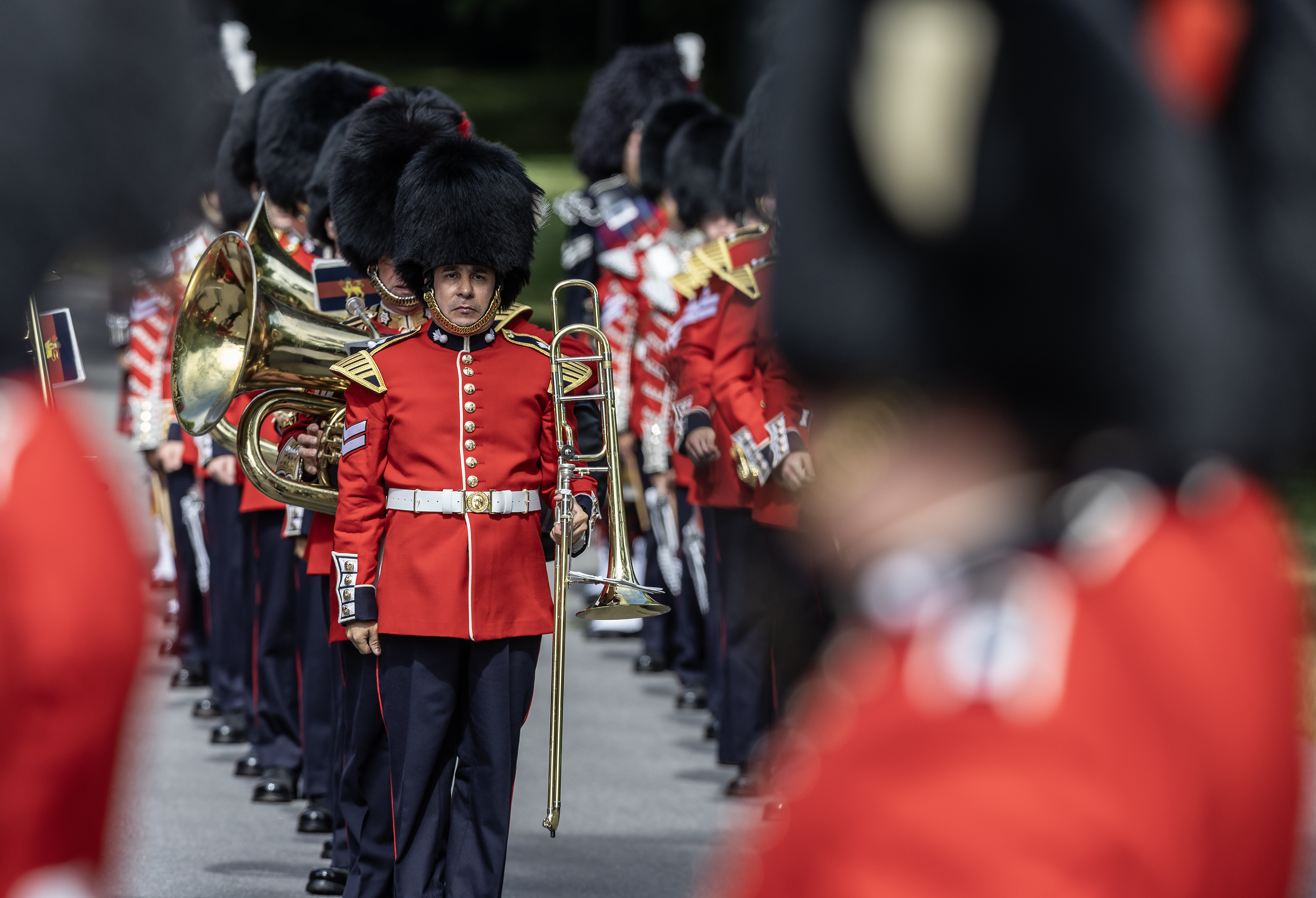
The Ceremonial Guard band is recruited nationally through competitive auditions at select conservatories and music faculties. Many members of the band are primary reserve musicians enrolled in university music programs. The band also recruits civilians, who must meet the unit’s rigorous audition standards, commit to a summer’s worth of music—and pass basic training. [Stephen J. Thorne/LM]

The position of drum major originated in the British Army Corps of Drums in 1650 in the days when band units would perform duty calls and battle signals. Besides music and administrative work, he was responsible for defending drummers and bandsmen. At various times, the drum major was also given battalion duties such as administering military justice, which could include flogging band members. The mace was a handy tool for signalling and keeping time. [Stephen J. Thorne/LM]

Major Brian Wright, commanding officer of the Ceremonial Guard, served with 3rd Battalion, The Royal Canadian Regiment in Afghanistan. He’s also been deployed to Haiti and was posted to British Army headquarters in Andover for four years. A Vancouver native, he assumed command of the Ceremonial Guard on June 16. The bearskin hat sits low on the brow, forcing the wearer to maintain an upright posture in order to see. Collar badges and buttons, including their spacing, denote regiments. The Foot Guards buttons are adorned with the guards’ star; the Grenadier Guards wear a flaming grenade.[Stephen J. Thorne/LM]
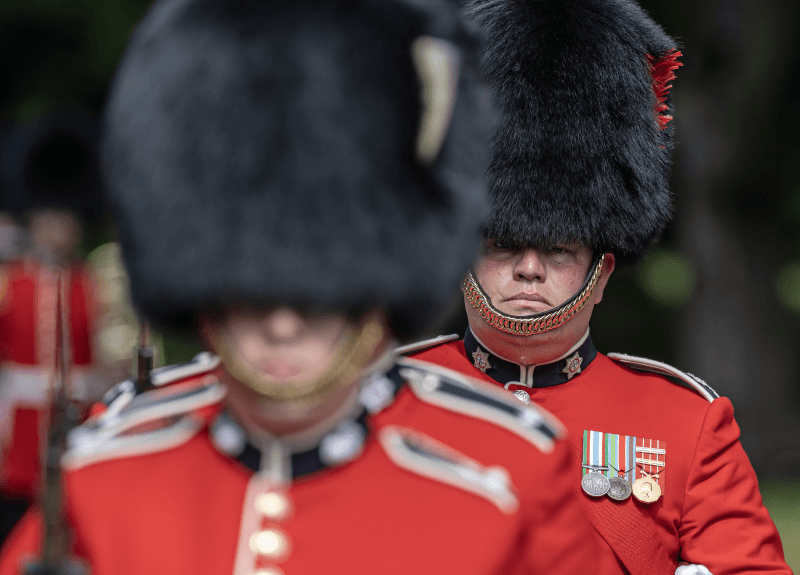
Chin strap. [Stephen J. Thorne/LM]
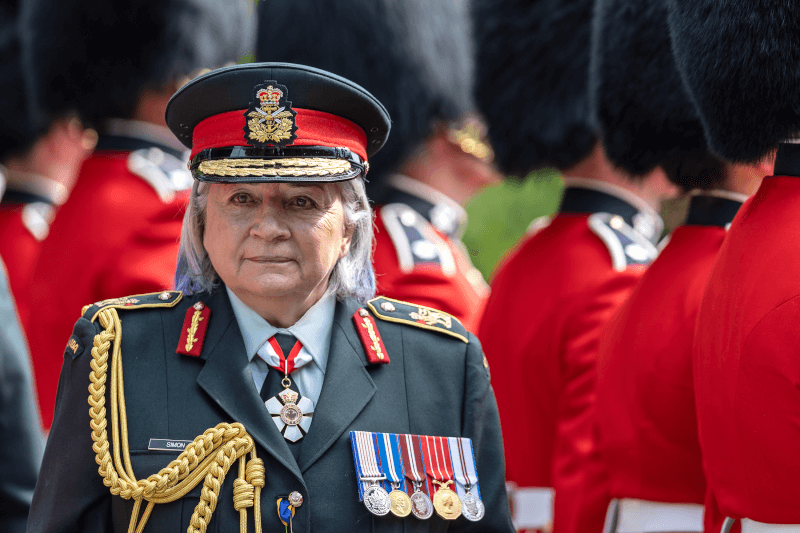
The Governor General is the head of state and commander-in-chief of the Canadian Armed Forces. At their appointment, they receive the Canadian Armed Forces decoration and become Colonel of the Regiment for the Governor General’s Foot Guards, the Governor General’s Horse Guards and the Canadian Grenadier Guards, as well as Chancellor and Commander of the Order of Military Merit. They are entitled to wear the traditional command uniform of any service. [Stephen J. Thorne/LM]
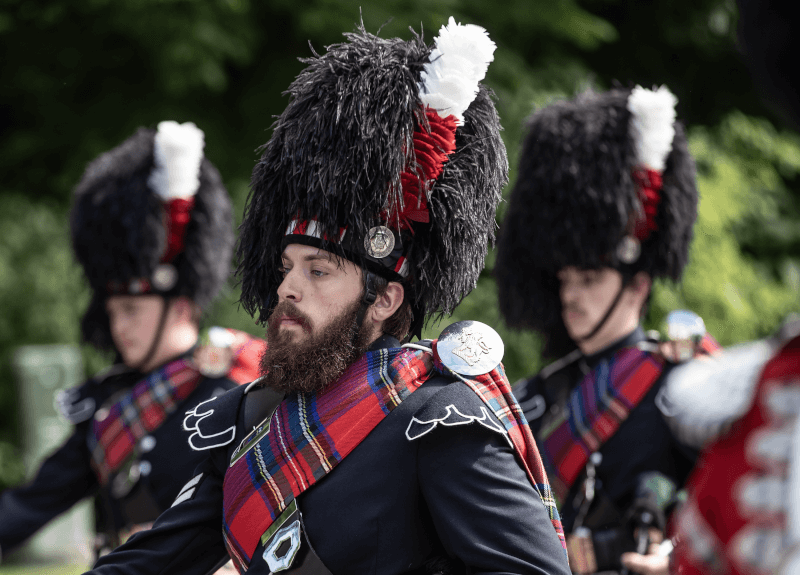
Pipers and drummers march. [Stephen J. Thorne/LM]

And the band plays on ….
[Stephen J. Thorne/LM]
Advertisement





















